-
 Bitcoin
Bitcoin $78,719.2006
-5.56% -
 Ethereum
Ethereum $1,583.1656
-12.44% -
 Tether USDt
Tether USDt $0.9998
0.01% -
 XRP
XRP $1.9088
-10.76% -
 BNB
BNB $560.9083
-5.15% -
 USDC
USDC $1.0004
0.04% -
 Solana
Solana $106.3174
-11.37% -
 Dogecoin
Dogecoin $0.1478
-12.16% -
 TRON
TRON $0.2291
-2.88% -
 Cardano
Cardano $0.5760
-11.29% -
 UNUS SED LEO
UNUS SED LEO $8.9099
-2.51% -
 Chainlink
Chainlink $11.2991
-11.88% -
 Toncoin
Toncoin $2.9368
-9.64% -
 Stellar
Stellar $0.2262
-10.37% -
 Shiba Inu
Shiba Inu $0.0...01137
-7.50% -
 Avalanche
Avalanche $16.0961
-7.76% -
 Sui
Sui $1.9171
-12.64% -
 Hedera
Hedera $0.1405
-12.85% -
 MANTRA
MANTRA $6.0521
-3.00% -
 Polkadot
Polkadot $3.6466
-7.23% -
 Bitcoin Cash
Bitcoin Cash $274.4163
-8.88% -
 Dai
Dai $1.0002
0.01% -
 Litecoin
Litecoin $70.2845
-14.71% -
 Ethena USDe
Ethena USDe $0.9989
-0.04% -
 Bitget Token
Bitget Token $4.1349
-7.18% -
 Pi
Pi $0.5928
-11.07% -
 Monero
Monero $201.4462
-6.45% -
 Hyperliquid
Hyperliquid $10.5838
-10.85% -
 Uniswap
Uniswap $5.1326
-12.02% -
 OKB
OKB $51.8936
-1.05%
What is mining and what role does it play in blockchain?
Cryptocurrency mining verifies transactions, adding them to the blockchain ledger via proof-of-work or alternative consensus mechanisms. This decentralized process ensures network security and prevents single-entity control.
Mar 03, 2025 at 02:18 am
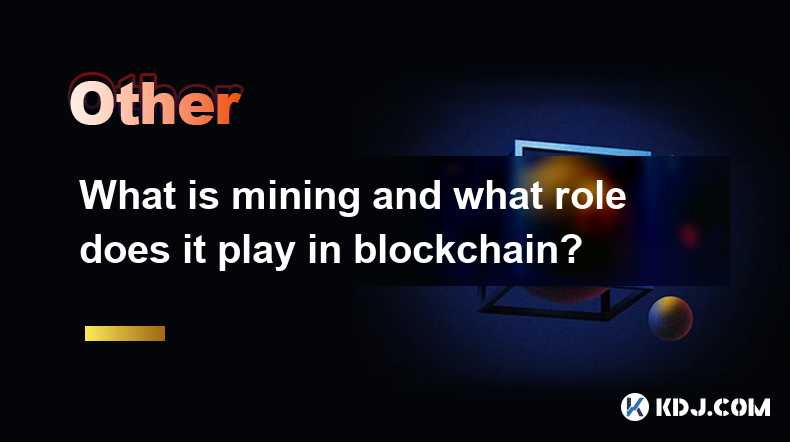
What is Mining and What Role Does it Play in Blockchain?
Key Points:
- Mining's Core Function: Mining is the process by which new cryptocurrency transactions are verified and added to the blockchain ledger. This verification process ensures the security and integrity of the entire system.
- The Proof-of-Work Mechanism: Most prominent cryptocurrencies, like Bitcoin, utilize a proof-of-work (PoW) consensus mechanism. This involves miners competing to solve complex cryptographic puzzles. The first miner to solve the puzzle gets to add the next block of transactions to the blockchain and receives a reward (newly minted cryptocurrency).
- Hardware Requirements: Mining requires specialized hardware, often ASICs (Application-Specific Integrated Circuits), due to the computational intensity of the PoW algorithms. The cost of this hardware, along with electricity consumption, significantly impacts the profitability of mining.
- Decentralization and Security: Mining is crucial for the decentralization and security of a blockchain network. The distributed nature of mining prevents any single entity from controlling the blockchain, making it resistant to censorship and single points of failure.
- Alternative Consensus Mechanisms: Beyond PoW, other consensus mechanisms exist, such as Proof-of-Stake (PoS), which offer alternative approaches to transaction verification and reward distribution, often with lower energy consumption.
Understanding Cryptocurrency Mining
- The Process of Verification: Imagine a digital ledger (the blockchain) recording every cryptocurrency transaction. To prevent fraud and ensure accuracy, each new batch of transactions (a "block") needs to be verified before it's added to the ledger. This is where mining comes in. Miners are individuals or organizations that dedicate computing power to solve complex mathematical problems related to the transactions in a block. The first miner to solve the problem gets to add the block to the blockchain. This process, often referred to as "adding a block to the chain," is fundamental to maintaining the integrity of the cryptocurrency system. The complexity of these problems ensures that it is computationally infeasible for malicious actors to alter past transactions or create fraudulent ones. This verification process is what establishes trust and security within the decentralized network. The act of verification itself, coupled with the distributed nature of the miners, makes the blockchain incredibly resistant to manipulation or attack. Each block builds upon the previous one, creating a chronologically ordered and tamper-proof record of all transactions. This chronological ordering and the cryptographic linking of blocks are key elements in ensuring the immutability of the blockchain. The entire process, from transaction initiation to block verification and addition, is designed to be transparent and verifiable by all participants in the network. This transparency contributes significantly to the overall trustworthiness of the system. The reward system, where miners are compensated for their computational efforts, incentivizes participation and maintains the security of the network. The more miners participating, the more secure the network becomes.
- Proof-of-Work (PoW) Explained: The most common mechanism used in cryptocurrency mining is Proof-of-Work (PoW). In PoW systems, miners compete to solve computationally intensive cryptographic hash puzzles. These puzzles are designed to be incredibly difficult to solve, requiring substantial computing power. The first miner to find the solution (a specific hash value within a certain range) gets to add the next block of transactions to the blockchain and is rewarded with newly minted cryptocurrency and any transaction fees included in the block. The difficulty of the puzzle adjusts dynamically based on the total computing power (hashrate) of the network. If the hashrate increases, the difficulty increases to maintain a consistent block generation time. This self-regulating mechanism ensures that the network remains secure even as more miners join. The intense computational effort required for PoW serves as a deterrent against malicious actors attempting to manipulate the blockchain. The energy consumption associated with PoW is a subject of ongoing debate, with critics highlighting its environmental impact. However, proponents argue that the security and decentralization provided by PoW outweigh these concerns. Furthermore, research and development continue to explore more energy-efficient PoW algorithms and alternative consensus mechanisms. The core principle remains the same: to use computational effort to secure the network and validate transactions.
- Hardware and Infrastructure: Mining cryptocurrencies, particularly those using PoW, requires specialized hardware and significant infrastructure. Application-Specific Integrated Circuits (ASICs) are purpose-built chips designed for the specific algorithms used in mining. These ASICs are far more efficient than general-purpose CPUs or GPUs in solving the cryptographic puzzles. The cost of these ASICs can be substantial, representing a significant barrier to entry for new miners. In addition to the hardware, miners need reliable power supplies to run their equipment. The energy consumption of mining can be significant, leading to concerns about the environmental impact of cryptocurrency mining. Large-scale mining operations often involve significant investments in cooling systems to manage the heat generated by the ASICs. The location of mining operations is also a crucial factor, as access to cheap and reliable electricity can significantly impact profitability. Many mining operations are located in regions with low electricity costs, such as certain parts of China (before the ban), Kazakhstan, and Iceland. The infrastructure requirements for mining extend beyond hardware and power; robust internet connectivity is essential to ensure seamless communication with the blockchain network. The management of mining operations often involves sophisticated software and monitoring tools to optimize efficiency and profitability.
- Decentralization and Security through Mining: The decentralized nature of mining is crucial for the security and robustness of blockchain networks. Unlike centralized systems where a single entity controls the database, blockchain networks distribute the verification process among many miners. This distribution prevents any single entity from controlling the network or manipulating transactions. The more miners participate, the more secure the network becomes, making it highly resistant to attacks like 51% attacks (where a single entity controls more than half of the network's computing power). The decentralized nature of mining ensures that the blockchain remains censorship-resistant. No single entity can block or censor transactions. This characteristic is particularly valuable in scenarios where freedom of speech and financial transactions are important. The competitive nature of mining ensures that miners are incentivized to maintain the integrity of the blockchain. If a miner attempts to introduce fraudulent transactions, other miners will reject the block containing those transactions, preventing the fraud from being added to the blockchain. The transparency of the mining process allows for independent verification of transactions, further enhancing the security and trustworthiness of the system. This distributed consensus mechanism is a fundamental pillar of blockchain technology, ensuring its reliability and resilience against attacks.
- Beyond Proof-of-Work: Alternative Consensus Mechanisms: While Proof-of-Work is the most well-known consensus mechanism, other methods exist. Proof-of-Stake (PoS) is a popular alternative that offers several advantages over PoW. In PoS systems, miners (often called "validators") are selected to validate transactions based on the amount of cryptocurrency they stake. This means that validators need to lock up a certain amount of their cryptocurrency as collateral. This process reduces the energy consumption compared to PoW, as it does not require the same level of computational power. The selection process is often randomized, ensuring fairness and preventing any single entity from dominating the validation process. Other consensus mechanisms include Delegated Proof-of-Stake (DPoS), which allows token holders to elect validators, and Practical Byzantine Fault Tolerance (PBFT), which is a deterministic consensus mechanism often used in private blockchains. These alternative mechanisms aim to address some of the limitations of PoW, such as high energy consumption and scalability issues. The choice of consensus mechanism depends on the specific design goals of the blockchain network, with factors such as security, scalability, and energy efficiency playing crucial roles in the decision-making process. The ongoing development and research in consensus mechanisms are driving innovation and improvements in the efficiency and sustainability of blockchain technology.
FAQs
Q: What are the environmental concerns related to cryptocurrency mining?
A: The primary environmental concern stems from the high energy consumption of Proof-of-Work (PoW) mining. The vast computational power required to solve cryptographic puzzles results in significant electricity usage, contributing to greenhouse gas emissions. The impact varies depending on the energy source used (e.g., renewable vs. fossil fuels). The industry is actively exploring solutions like renewable energy sources and more energy-efficient consensus mechanisms (like Proof-of-Stake) to mitigate these concerns.
Q: Is cryptocurrency mining profitable?
A: The profitability of cryptocurrency mining depends on several factors, including the price of the cryptocurrency being mined, the difficulty of the mining algorithm, the cost of electricity, and the hardware costs. It can be highly profitable during periods of high cryptocurrency prices and low mining difficulty, but it can also be unprofitable when these conditions reverse. Detailed cost-benefit analysis is crucial before embarking on cryptocurrency mining.
Q: What are the risks associated with cryptocurrency mining?
A: Risks include the volatility of cryptocurrency prices (affecting profitability), the cost of hardware and electricity, the potential for hardware failure, and the risk of regulatory changes that could impact the legality or profitability of mining. Furthermore, the technical expertise required to set up and maintain mining operations presents a significant hurdle.
Q: Can I mine cryptocurrency from my home computer?
A: While technically possible, mining Bitcoin or other major cryptocurrencies from a home computer is generally not profitable due to the high computational power required and the intense competition from large-scale mining operations. You might find success mining less popular cryptocurrencies with less demanding algorithms, but profitability remains questionable.
Q: How does mining contribute to the decentralization of a blockchain?
A: Mining distributes the verification process across a network of independent participants. This prevents any single entity from controlling the blockchain, ensuring its resistance to censorship and manipulation. The more miners participating, the more secure and decentralized the network becomes. This distributed nature is a key feature of blockchain technology.
Disclaimer:info@kdj.com
The information provided is not trading advice. kdj.com does not assume any responsibility for any investments made based on the information provided in this article. Cryptocurrencies are highly volatile and it is highly recommended that you invest with caution after thorough research!
If you believe that the content used on this website infringes your copyright, please contact us immediately (info@kdj.com) and we will delete it promptly.
- 4 Best Cryptos to Buy That Could Deliver High Potential Returns
- 2025-04-07 10:15:25
- Nexus Partners with Orochi Network to Deliver a Verifiable Internet on Web3
- 2025-04-07 10:15:25
- XRP Has Found Itself Back in the Spotlight as Market Momentum Builds
- 2025-04-07 10:10:11
- As we enter Q2 of 2025, the global crypto market finds itself steering a complex intersection of macroeconomic and geopolitical pressures.
- 2025-04-07 10:10:11
- Mutuum Finance (MUTM) Quietly Rallies 25% as It Enters the Next Phase of Its Presale
- 2025-04-07 10:05:12
- Intercontinental Exchange Inc. Has Announced That It Signed a Memorandum of Understanding with Circle Internet Group, Inc.
- 2025-04-07 10:05:12
Related knowledge
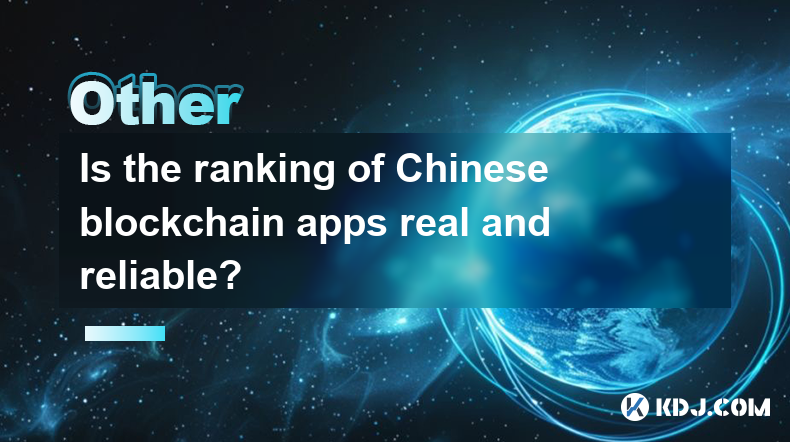
Is the ranking of Chinese blockchain apps real and reliable?
Apr 04,2025 at 09:01pm
The ranking of Chinese blockchain apps has become a topic of interest for many in the cryptocurrency community, as it provides insights into the popularity and adoption of blockchain technology within China. However, the reliability and authenticity of these rankings are often questioned. This article aims to delve into the factors that influence these ...
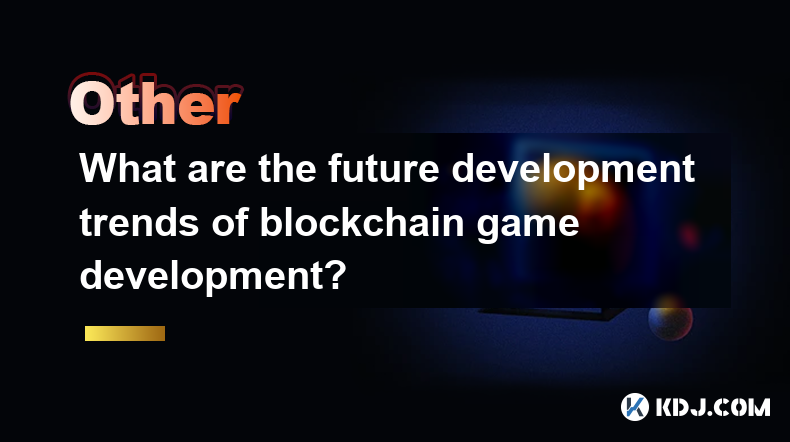
What are the future development trends of blockchain game development?
Apr 03,2025 at 05:00am
Blockchain technology has revolutionized various industries, and gaming is no exception. As we look to the future, several trends are set to shape the development of blockchain games. These trends not only promise to enhance the gaming experience but also to integrate blockchain technology more seamlessly into the gaming ecosystem. Let's explore these t...
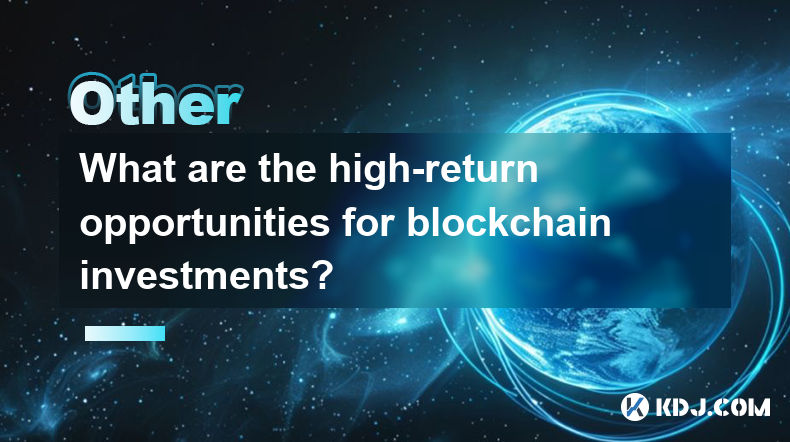
What are the high-return opportunities for blockchain investments?
Apr 05,2025 at 02:35pm
Blockchain technology has revolutionized the financial world, offering numerous high-return investment opportunities. These opportunities span various sectors within the cryptocurrency ecosystem, including cryptocurrencies, decentralized finance (DeFi), non-fungible tokens (NFTs), and blockchain startups. Each of these areas presents unique risks and re...
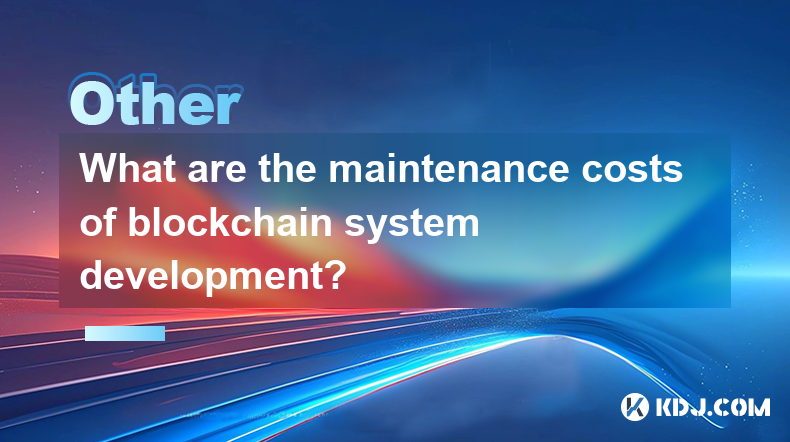
What are the maintenance costs of blockchain system development?
Apr 03,2025 at 06:07pm
The maintenance costs of blockchain system development are multifaceted and depend on various factors. These costs can include technical maintenance, security updates, infrastructure expenses, and personnel costs. Understanding these elements is crucial for anyone planning to develop or maintain a blockchain system. Technical MaintenanceTechnical mainte...
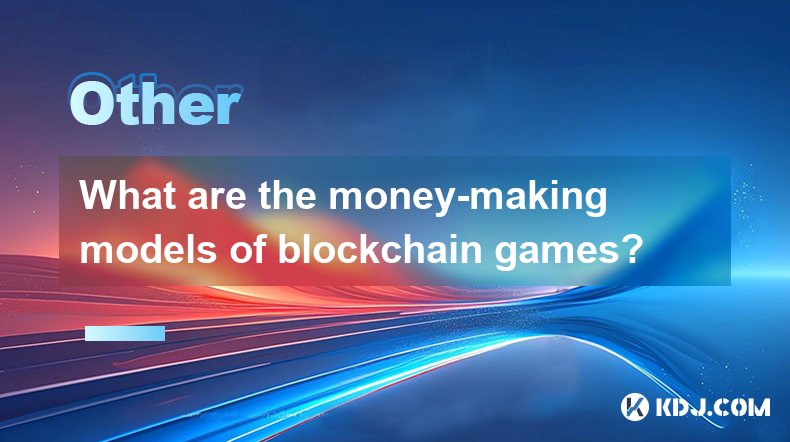
What are the money-making models of blockchain games?
Apr 04,2025 at 02:00pm
Blockchain games have emerged as a revolutionary way for players to earn real money while enjoying their favorite pastime. These games leverage the power of blockchain technology to create unique money-making models that benefit both the players and the developers. In this article, we will explore the various money-making models of blockchain games and ...
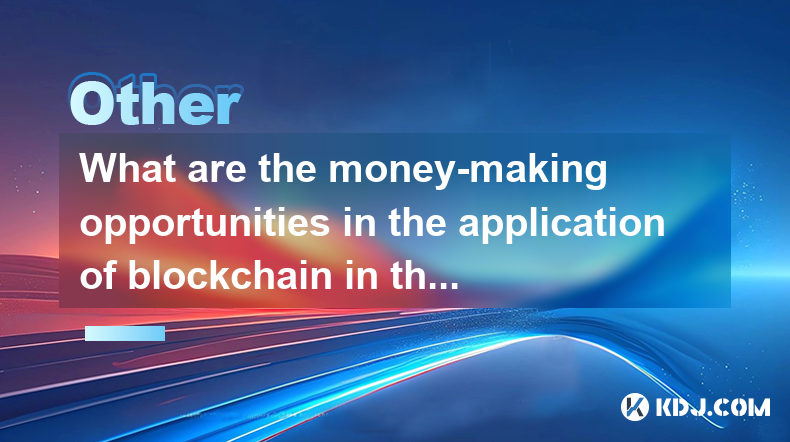
What are the money-making opportunities in the application of blockchain in the field of Internet of Things?
Apr 05,2025 at 10:35pm
The integration of blockchain technology with the Internet of Things (IoT) presents numerous money-making opportunities. Blockchain, with its decentralized and secure nature, can revolutionize how IoT devices interact, manage data, and conduct transactions. This article will explore various avenues where entrepreneurs, developers, and investors can capi...

Is the ranking of Chinese blockchain apps real and reliable?
Apr 04,2025 at 09:01pm
The ranking of Chinese blockchain apps has become a topic of interest for many in the cryptocurrency community, as it provides insights into the popularity and adoption of blockchain technology within China. However, the reliability and authenticity of these rankings are often questioned. This article aims to delve into the factors that influence these ...

What are the future development trends of blockchain game development?
Apr 03,2025 at 05:00am
Blockchain technology has revolutionized various industries, and gaming is no exception. As we look to the future, several trends are set to shape the development of blockchain games. These trends not only promise to enhance the gaming experience but also to integrate blockchain technology more seamlessly into the gaming ecosystem. Let's explore these t...

What are the high-return opportunities for blockchain investments?
Apr 05,2025 at 02:35pm
Blockchain technology has revolutionized the financial world, offering numerous high-return investment opportunities. These opportunities span various sectors within the cryptocurrency ecosystem, including cryptocurrencies, decentralized finance (DeFi), non-fungible tokens (NFTs), and blockchain startups. Each of these areas presents unique risks and re...

What are the maintenance costs of blockchain system development?
Apr 03,2025 at 06:07pm
The maintenance costs of blockchain system development are multifaceted and depend on various factors. These costs can include technical maintenance, security updates, infrastructure expenses, and personnel costs. Understanding these elements is crucial for anyone planning to develop or maintain a blockchain system. Technical MaintenanceTechnical mainte...

What are the money-making models of blockchain games?
Apr 04,2025 at 02:00pm
Blockchain games have emerged as a revolutionary way for players to earn real money while enjoying their favorite pastime. These games leverage the power of blockchain technology to create unique money-making models that benefit both the players and the developers. In this article, we will explore the various money-making models of blockchain games and ...

What are the money-making opportunities in the application of blockchain in the field of Internet of Things?
Apr 05,2025 at 10:35pm
The integration of blockchain technology with the Internet of Things (IoT) presents numerous money-making opportunities. Blockchain, with its decentralized and secure nature, can revolutionize how IoT devices interact, manage data, and conduct transactions. This article will explore various avenues where entrepreneurs, developers, and investors can capi...
See all articles





















































































